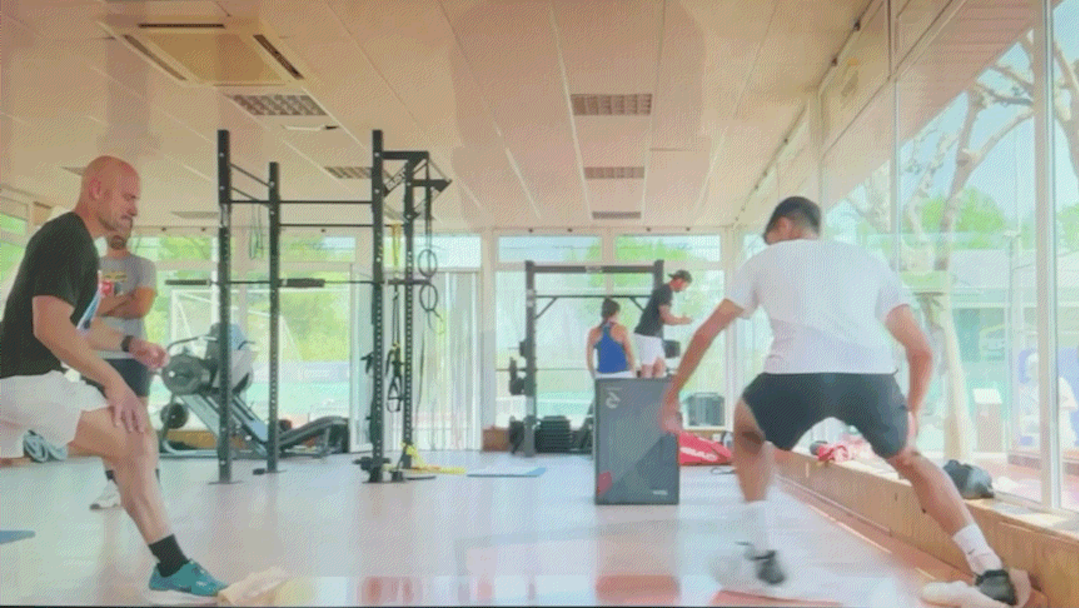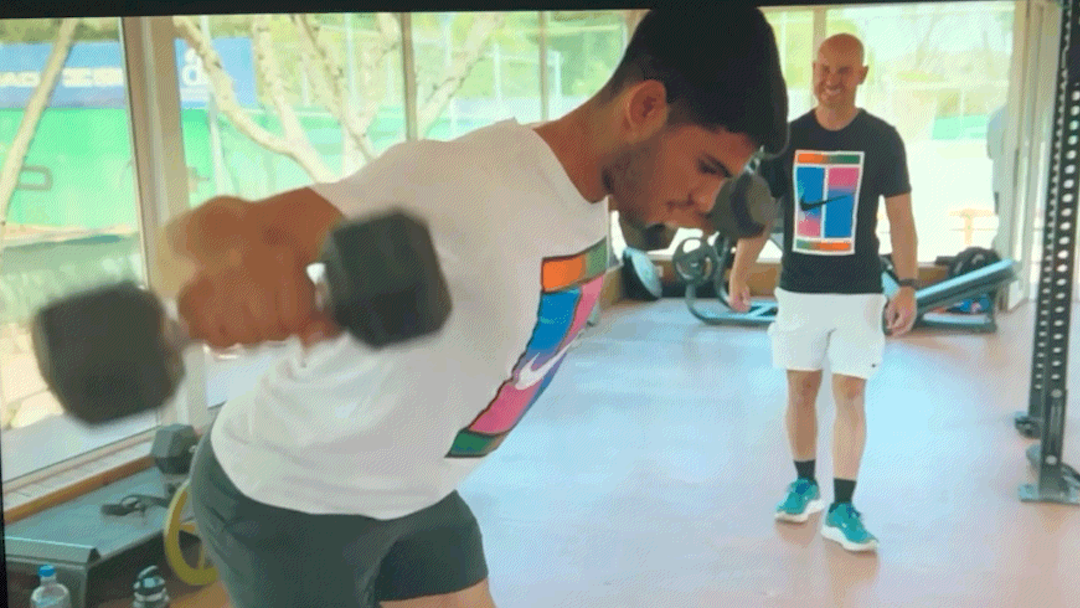I was only a few minutes into screening the new Netflix docuseries Carlos Alcaraz: My Way before realizing I would be breaking down many of the training and injury rehab techniques he was seen performing on the show. In addition to the sheer fandom benefits of these in-depth player biopics, tennis players can glean real insight into the physical preparation of one of the sport’s rising stars. However, unlike the notorious “death march” I put us all through doing the same thing in Break Point, I do not intend to release these in a contiguous series. In other words, I intend to pace myself a little better this time around.
The first physical training activity Alcaraz was seen performing in My Way is a landmine of a topic. In weight training, a landmine is a setup where one end of a barbell is anchored while the other end remains free for movement. The anchor point can either be a rotating sleeve attachment or simply wedged into a corner. Either way, the setup provides an arcing, pivoting range of motion that allows for more natural and joint-friendly exercises than traditional barbell lifts.
Landmine exercises are particularly well-suited for tennis players because they mirror many of the sport’s rotational movement patterns. The arcing, pivoting path of the bar in landmine setups aligns closely with the diagonal forces involved in tennis strokes. This makes landmine training an effective way to build functional strength, improve rotational power, and enhance shoulder and core stability. As a bonus, because landmine exercises are generally more joint-friendly than traditional barbell lifts, they can be a safer option for athletes rehabilitating an injury, which was the case for Alcaraz during the opening moments of the docuseries.
The camera framing is extremely tight when Alcaraz is glimpsed performing a lift using a landmine sleeve attachment, so it is difficult to see exactly what exercise he is performing. By my eye, I think it is a shallow pulsed reverse lunge, but other people with more experience with landmine variations of weight training might have a better perspective to offer.

The space constraints of my home gym have pretty much precluded me from adding a full barbell to my equipment. However, I am intrigued by the rotational benefits of landmine exercises and wonder if the device’s geometric benefits might work within my constrained space. I am seriously considering adding a single barbell, landmine device, and weight plate to my arsenal.
As with so many aspects of tennis fitness, the key is finding exercises that deliver maximum benefit without unnecessary wear and tear, and landmine training appears to check that box. Watching Alcaraz in that brief clip underscores how this type of tailored strength training can meet the physical demands of the modern game.

Landmine Attachment for Barbell (<- Sponsored Link)
While I may not have the sprawling fitness space that Alcaraz enjoys, the compact footprint and multi-functionality of a landmine setup have me thinking it might be worth the investment. If I do add one to my home gym, you can bet I’ll be reporting back on whether it lives up to its on-screen potential. If you’ve been training with a landmine setup yourself, I’d love to hear about your experience. Drop a note in the comments and let me know how it worked for you.
Fiend At Court participates in the Amazon Associates program and receives a paid commission on any purchases made via the links in this article. Details on the disposition of proceeds are available on the “About Fiend at Court” page.



